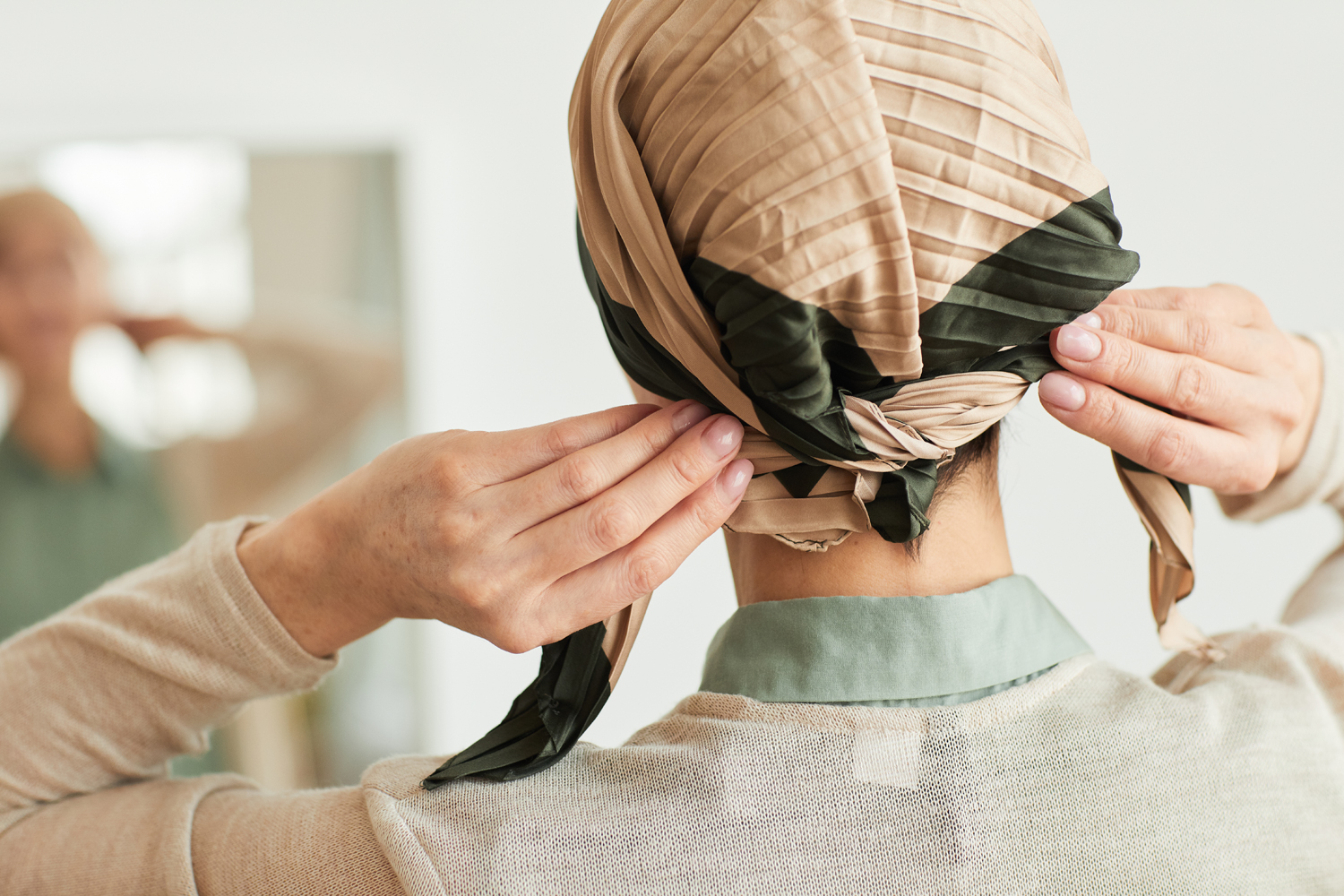I am about to start chemotherapy and am worried about losing my hair. What can I do to help prevent hair loss?

Julie Nangia, medical oncologist at the Dan L. Duncan Comprehensive Cancer Center at Baylor College of Medicine in Houston
JULIE NANGIA: Scalp cooling is the only proven and effective way to prevent chemotherapy-induced hair loss. In scalp cooling, cold temperatures applied to the head constrict blood vessels in your scalp to limit the amount of the drug that reaches your hair follicles. It also decreases enzyme activity in the hair follicle.
You can achieve scalp cooling in two ways. First, there are frozen caps, also referred to as cold caps or cooling caps, which you can rent. These can be somewhat labor intensive since you’ll need to keep the caps on dry ice in a cooler and change them every 30 minutes while receiving your chemotherapy treatments. You also may wear them about 30 minutes before each infusion and for a variable period afterward. Online companies will ship the portable caps directly to you.
The second option is a scalp-cooling device, available at some infusion centers. There are now three scalp-cooling systems approved by the Food and Drug Administration to help reduce hair loss during chemotherapy treatment for solid cancers. Much easier to use than frozen caps, these scalp-cooling devices are almost like miniature refrigeration units that circulate coolant at a steady temperature through a cap. You’ll get fitted for the cap, and you don’t have to change it out like with the frozen cap.
I’ve worn the cooling devices, and the sensation is similar to jumping into a cold pool; it feels very cold and slightly uncomfortable for the first five or 10 minutes, and then you get used to it. Most people tolerate the device and find it reasonably comfortable, although it may cause headaches for some.
Based on data from clinical trials, National Comprehensive Cancer Network treatment guidelines recommend scalp cooling to reduce hair loss in people receiving chemotherapy, and insurance is beginning to pay for it. But the newer scalp-cooling devices still aren’t available everywhere. Whether you rent cold caps or use a scalp-cooling system at your cancer center, scalp cooling typically costs hundreds of dollars per month. You’ll want to check with your care center and insurance provider about the cost and your coverage. Some organizations also will help cover the cost of scalp cooling.
While scalp cooling is proven to help reduce hair loss, how well it works will vary. In a clinical trial, 50% of the women using scalp cooling during chemotherapy lost less than half their hair, which was considered a success. It is more effective among those undergoing taxane-based chemotherapy, but it doesn’t work as well with some other types of chemo, so talk to your doctor about what to expect. Most patients likely will still see significant hair thinning.
During chemo, whether or not you opt for scalp cooling, it also helps to be gentle with your hair. Don’t color it or have other stressful hair treatments done. Stick to shampoos and conditioners without harsh chemicals, such as sulfates, which may leave your hair dry and brittle.
MANAGING HAIR LOSS // The Mayo Clinic offers information on when to expect hair loss during chemo and how long hair takes to grow back. // Breastcancer.org explains features of cold caps versus scalp-cooling systems and ways you can prepare for treatment.
Cancer Today magazine is free to cancer patients, survivors and caregivers who live in the U.S. Subscribe here to receive four issues per year.





